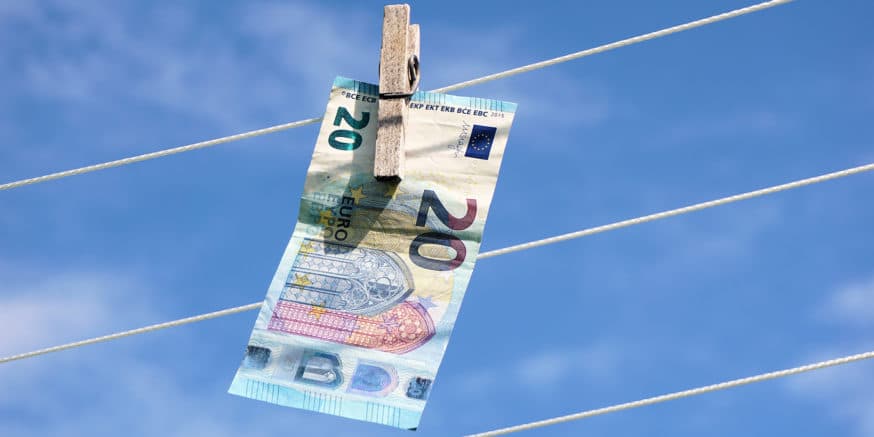Stablecoins are all the rage in 2018. At last count, there were no less than twenty projects aiming to be the king of cryptocurrency exchange stability. Fiat currency pegs have been used throughout history as a way to fix one country’s currency against another. An example of this is the Hong Kong dollar, which is fixed at a rate of 1 US dollar for every 7.75 – 7.85 HKD.
The idea behind pegs is to protect a country’s currency against volatile exchange rate movements and therefore improve trade and reduce risk. It shouldn’t come as a surprise then that the most volatile asset class in town is attracting its own stablecoin and currency peg solutions.
What Are Stablecoins?
In short, stablecoins are an attempt to represent fiat money (dollars, euros, etc.) on the blockchain. Converting between fiat and crypto is still a time-consuming process and the bottleneck is almost always on the fiat side. The major hurdles? Heavy regulation and banking systems that some estimate still to be using fifty-year-old technology.
While fiat transfers have certainly improved over the years, most still take anywhere between one to three days to clear locally and between five to eight days internationally. And that’s just one way. Compare this with Bitcoin, which currently takes somewhere between 10 and 20 minutes to clear. Quite something when you consider that Bitcoin is one of the slower blockchains out there!
Along with some other controversial reasons to have stablecoins, the main reason is that traders don’t want to wait days to exchange between crypto and fiat. By exchanging into something like Tether, you’re effectively cashing out without actually having to cash out. “Why, that’s genius!” I hear you say. Well, not quite. Currency pegs suffer from their own set of problems, and history has some interesting lessons to share with us.
Lessons From History
Black Wednesday
In September of 1992, the infamous Black Wednesday event was characterized when the billionaire investor George Soros famously broke the Bank of England. At the time, Britain had hoped to join the euro but was required to keep their exchange rate stable for a few years before doing so. The British pound was already under pressure and the only way the English central bank could stabilize their currency was to buy more pounds in the open market.

Mr. Soros, recognizing the situation, predicted that the central bank wouldn’t have enough foreign reserves (USD, yen, etc) to defend its own currency from depreciating. He consequently started selling pounds in massive quantities. Despite heavy buying from the bank, it eventually relented and the pound moved sharply lower. The legendary investor was reported to have made a cool $1 billion in profit that day.
Black Wednesday highlighted the dangers of trying to contain the forces of the open market, which is essentially what a currency peg is trying to do. This is not an isolated incident and has happened on more than one occasion since. The 1997 Asian financial crisis began when the Thailand baht broke its peg. And in more recent times, markets were in a frenzy for quite some time after the Swiss National Bank removed its peg to the euro in early 2015.
Hong Kong Dollar
It’s worthy to note that not all pegs break under pressure. At least not yet. The Hong Kong dollar is a shining success compared to some of its Asian counterparts. It has been pegged to the US dollar for more than 30 years. With sound monetary policy and good governance, it’s possible to have pegged exchange rates that actually work.
The Risks with Stablecoins
Stablecoins carry the same risks that traditional currency pegs do. Blockchains aren’t going to magically change that dynamic with a few lines of code. All stablecoins have the same destination in mind by following different routes.
Cold Hard Cash
Take Tether for example, which aims to maintain a currency peg of 1:1 with the US dollar. Notice in the chart below (USDT / USD) the loss of confidence in the price of Tether on several occasions:

Just like the English central bank, whenever the price of Tether (USDT) falls against the dollar, the company and/or investors need to buy back more of the token in the open market to maintain the peg. A sustained drop in the price would undermine the whole project.
The biggest problem for these asset-backed stablecoins like Dai, however, is that they’re all tied to the risks of the underlying currency they are trying to imitate or leverage. Be that USD, Ether or something else.
Math to the Rescue?
Other stablecoin projects like Basis are using largely untested mathematical engineering to maintain their pegs. The theory goes that when prices increase too much they can just print more tokens and inflation will cause prices to drop. The same principle is applied in reverse where tokens can be burned and the resulting deflation should restore the peg.
Confidence Is Everything
This all sounds rather impressive but that doesn’t make it any less theoretical. The most important element that just about all projects are missing is that cryptocurrency markets, like any other, are a confidence game. Investors are not going to buy your shitcoin unless they buy into the idea first. Unfortunately, many stablecoin projects are just masking the fact that they ironically want to be the central bankers of the new age.
[thrive_leads id=’5219′]
Stablecoins and Currency Pegs
As we mentioned previously, not all currency pegs are doomed to fail. The idea is a noble yet complex undertaking. The true test of currency pegs often happens in times of financial crisis, and cryptocurrency is such a new asset class that we won’t really be able to tell what will happen until we’re smack bang in the middle of the next one.
Investors and stablecoin projects continue to point out the crazy volatility that exists in Bitcoin and altcoin trading. That’s mostly missing the point though. Volatility is currently an ingredient we need to balance out in a worldwide financial system which has arguably run completely out of control. The more important element here is to get people to start thinking in terms of a new global currency, such as Bitcoin, instead of their local one.
There are signs that point to the eventual destruction of fiat based monetary systems. When that happens, will there still be a need for stablecoins?
Never Miss Another Opportunity! Get hand selected news & info from our Crypto Experts so you can make educated, informed decisions that directly affect your crypto profits. Subscribe to CoinCentral free newsletter now.










